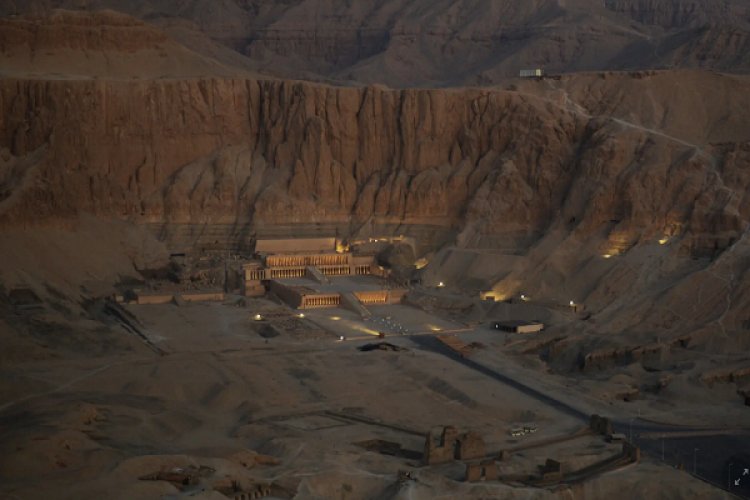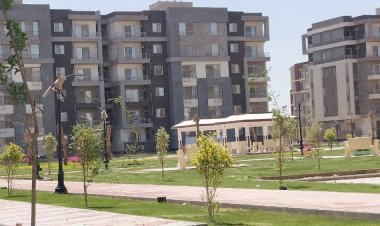Details.. Know Impact of Climate Change on The Destruction of Egyptian Antiquities

In conjunction with the launch of the Climate Summit (COP27) in Sharm El-Sheikh, it shed light on the danger of climate change on the Egyptian monuments.
When Howard Carter discovered Tutankhamun’s glittering tomb in Egypt’s Valley of the Kings 100 years ago, he was living in a mud-brick house surrounded by desert so dry it had preserved the tombs, mummies and towering temples for more than 3,000 years.
In the century that followed, Mr. Carter’s house was turned into a museum with a green, palmy garden, thanks to water brought in from the Nile. The river’s annual floods were stilled by the construction in 1970 of Egypt’s Aswan High Dam, upstream and to the south of Luxor, allowing more frequent planting. More and more, farmers used the Nile’s water to inundate the expanding fields of alfalfa, sugar cane and vegetables that fed the country’s soaring population.

All of that water seeped into the stone foundations of Luxor’s epic temples and the mud brick of Carter House, mixing with salt in the soil and on the stones as they drew the water up like straws. Sandstone turned to sand and limestone cracked, crumbling the very old and the not very old at all alike.
Carter House reopened last week, protected from its own water-hungry garden by a new circle of desert, after a two-year restoration that stabilized the foundations and supplied the interior with Carter-era furniture and artwork. The famed temples of Karnak and Medinet Habu are now guarded by giant pumps that suck groundwater away.
Danger is Coming
But the danger is coming from above as well as below: Local residents and archaeologists say rainstorms have arrived with increasing frequency as the climate changes, corroding the stones and washing ancient color from the carvings. Some temple stones have cracked in two; moisture has reduced chunks of others to little more than powdery ocher sand; and still others are eaten away entirely.
“Maybe people here don’t go to school, but they know that if we treat the earth badly, the bad will come back,” said Abdu Ghaba, 42, who grew up in New Gourna, across the Nile from Luxor.
As the annual United Nations climate summit got underway this past week at the Egyptian Red Sea resort of Sharm el Sheikh, its host was in deep trouble.
Egypt is warming almost twice as fast as the rest of the world, and the Nile, the country’s main source of water, is drying up. Rising seawater is killing crops in Egypt’s breadbasket, the fertile Delta region north of Cairo where the Nile flows into the Mediterranean. The ancient city of Alexandria, on Egypt’s northern Mediterranean coast, stands to drown.
The effects of global warming on Egypt’s celebrated antiquities are already striking.

Monuments are already visibly damaged
In Luxor, the changing weather is amplifying the destructive impacts of human developments around the monuments over the centuries. The tombs in the Valley of the Kings will be “gone completely” within a century if they are not protected from mass tourism or other man-made stressors, the country’s most famous Egyptologist and a former antiquities minister, Zahi Hawass, has warned.
Archaeologists say some of Egypt’s monuments are already visibly damaged, and others, like the 15th-century Citadel of Qaitbay in Alexandria, are under threat from rising seas.
In the southern city of Aswan, temperatures that often surpass 100 degrees Fahrenheit have strained ancient granite monuments. Expanding under the hot sun and cooling in the night air, the granite eventually cracks, erasing inscriptions in the process.
Mr. Ghaba recalled that when the first strong rainstorm in his lifetime terrified Luxor in the 1990s, older villagers were convinced that the sky was crying from the pollution of nearby factories, avenging itself on the humans below.
Tombs and the temples to stay alive
He now works for an organization dedicated to documenting the ancient tombs in the Valley of the Kings in infinitesimal detail using sophisticated 3-D scanners.
“I want the tombs and the temples to stay alive — to preserve them,” he said. “We have to create something for the future to protect them.”
Long preserved by dry air and low population density, the slow-burning deterioration of Egypt’s antiquities hastened under Muhammad Ali Pasha, Egypt’s ruler in the first half of the 1800s. The onset of modernity at that time brought more people, more agriculture — which required more water — and more industrial activity to Luxor.
Egyptian authorities and foreign archaeologists thought they were doing the Karnak temples a favor in the 1870s by hauling away centuries’ worth of debris that had accumulated there. For future tourists, they were: The excavation revealed the legs of great statues and the bases of towering columns.
Until the High Dam held back the annual Nile floods, however, the digging also allowed salt- and mineral-rich floodwater to run down into the temple complex every year for a century, eroding the stones. Only the pumps installed in 2006 stopped further damage.
Agricultural irrigation and drainage systems for villages near the great pyramids of Giza caused the groundwater there to rise, as well, requiring similar pumps to rescue the Sphinx from groundwater that had puddled near its paws.
Karnak’s main problem is its geriatric age
“It’s in danger because it’s old,” said Luc Gabolde, who co-directs the French-Egyptian Center for the Study of the Temples of Karnak. The rain, though still rare, poses an increasing threat.
Mr. Gabolde’s team is working to preserve broken-off stone fragments by reassembling them, jigsaw-style, in structures of lime and sand, protecting them on four sides from rain and showing visitors how they were originally placed. That still leaves them vulnerable to moisture on two sides, and funding and time constraints mean many fragments remain in the open, with other parts of the temple threatening to crumble.
Across the Nile at Medinet Habu — a mortuary temple for the pharaoh Ramses III built around an even older temple to Amun-Ra, the ancient Egyptian sun god — a team of American archaeologists and mostly Egyptian stonemasons have been countering water damage since the 1990s.
“Water and salt are the enemy for these monuments,” said Brett McClain, a senior epigrapher at the Epigraphic Survey of the Oriental Institute at the University of Chicago, which has been documenting the inscriptions at Medinet Habu for nearly a century. “These monuments survived because they were dry.”
Damage the stone
One of the survey’s first projects was to rebuild an archway near the entrance, the Domitian Gate, that had threatened to tumble from its unstable foundation. Newly hewed stone blocks quarried from near the ancient Egyptians’ Nile-side quarry at Gebel el-Silsila now intermingle with the old. A few paces away, a second gate has been disassembled, awaiting a similar resurrection.
American-funded pumps installed in 2009 from Medinet Habu to the temple of Seti I prevent groundwater from further rotting the foundations. Still, the archaeologists estimate they have decades of conservation to do on the pre-2009 damage.
And the downpours keep coming, a couple of them a year now where there used to be none, adding moisture that the pumps cannot suck away.
Humans unintentionally caused another noticeable change in recent years: Pigeons have come to roost all over Medinet Habu, streaking the walls with their acidic droppings, which damage the stone.
protect the monuments
The birds arrived there after Egypt’s government, hoping to better protect the monuments, forced villagers out of a nearby settlement where they had lived for many years among a set of tombs. The villagers did not want to go. The pigeons they had raised for food stayed close, moving into the temple.
But the most obvious human impact on Luxor’s monuments is the sheer number of people who visit them. Before the coronavirus pandemic began in 2020, thousands of tourists passed through King Tut’s tomb daily.
Trying to balance tourism with preservation, the government commissioned the Getty Conservation Institute to install a ventilation system to mitigate humidity bred by human sweat and breathing, among other fixes. The project opened in 2019.
Another approach, advanced by the Madrid-based Factum Foundation, is to create realistic replicas that tourists can visit instead of the tombs — a model pioneered in France, where a full-scale replica of the Lascaux Cave and its prehistoric drawings has replaced the sealed-off original as a tourist destination.
A lifelike re-creation of King Tut’s tomb has been open to Carter House visitors since 2014 and the foundation hopes to scan more tombs.
“If anything crazy happens in the world,” said Aliaa Ismail, 31, the project’s manager, “we’re making a record because we don’t want it to be lost forever.”















